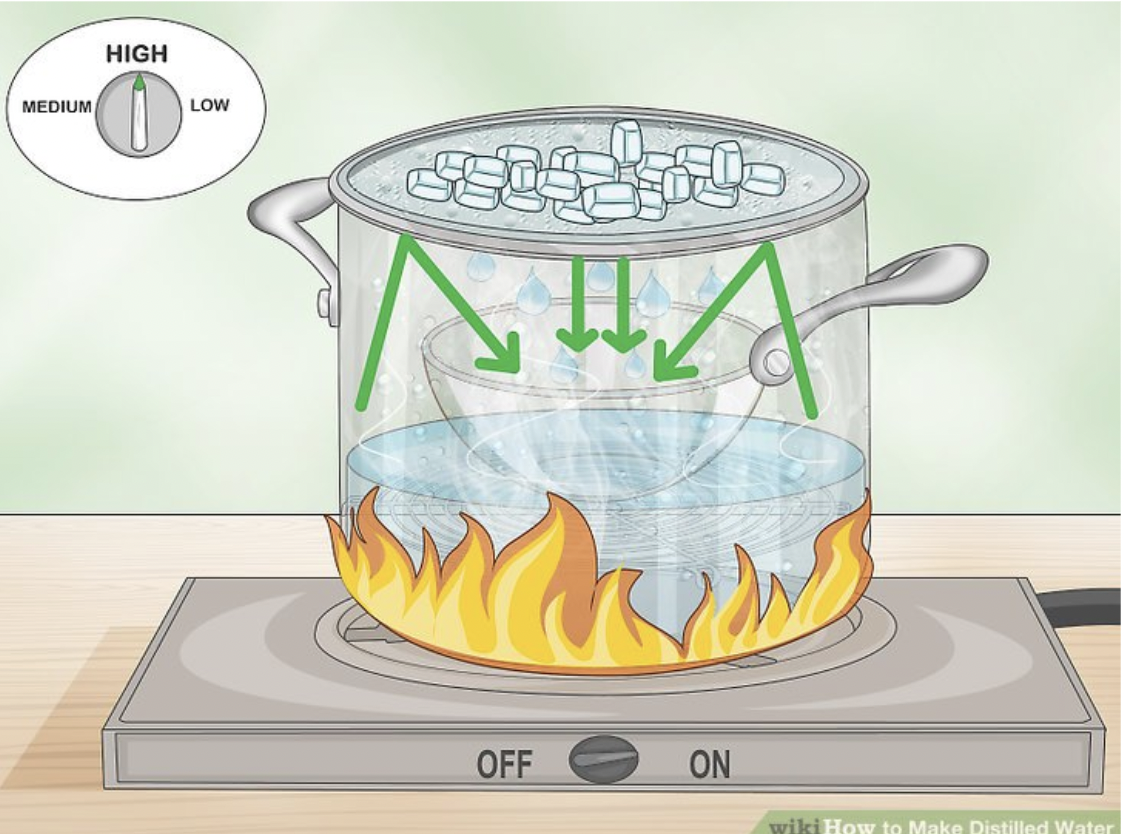Dear Big Chem-EZ, Access to clean water is one of the most urgent needs after a natural disaster. How can small Louisiana communities access clean water in the days and weeks following a hurricane?
Safe drinking water may not be accessible after a hurricane for a lot of reasons. Power outages could affect water treatment facilities, along with the pumps that maintain water pressure in the water lines, and hurricanes can also cause physical damage to the water lines themselves. Breaks in water lines or mains are especially dangerous when there is low water pressure in the pipes because contaminated groundwater can easily seep into the water supply. Impassable roads can make these breaks and power outages even harder to fix, so it can take weeks after a hurricane for tap water to be usable.
One of the short-term options for accessing drinking water is bottled water from local stores, but bottled water is in high demand after natural disasters, and it’s unlikely that enough bottled water will be stored locally to sustain even a small community for more than a few days.The CDC recommends that each person and pet will need one gallon of water per day (1), so it may become necessary to look for water sources other than bottled water. Although bulk water can, in some circumstances, be transported to communities from nearby hospitals, military bases, businesses, and federal agencies, some communities may be cut off from these supplies due to flooded or impassable roads for weeks.
When all else fails, it may be necessary to use purification methods on suspicious water. After a natural disaster, water sources can be contaminated with everything from microbes to gasoline to fertilizers. The most obvious method is boiling. In Southern Louisiana, a drop in water pressure is usually followed by a Boil Water Advisory, so we’re all familiar with boiling water as a method of sanitization. If you find yourself without a working stove, though, boiling may not be an option.
An alternative method of water purification is chlorination. The website Ready.gov (2), a national government campaign to educate Americans on emergency preparedness, has instructions on how to safely and effectively chlorinate water. Their tips include the following:
So how does chlorination work? Chlorine damages microbes’ cell membranes and then invades and kills the cells (3). Chlorine can also be dangerous for us if we consume it in high enough concentrations, so it’s important to not overdo it. Ready.gov recommends starting with ⅛ tsp of household bleach per gallon of water. If after stirring and leaving for thirty minutes the water doesn’t have a faint chlorine-like odor, add another ⅛ tsp and leave for another 30 minutes. If the water doesn’t still smell like chlorine, it should be discarded (2). It should be noted that chlorination, like boiling, only protects from microbial contaminants, so it will not necessarily make any water safe to drink. Especially in the case of floodwater, there may be non-microbial contaminants in the water that could make you sick, and boiling or chlorination alone won’t protect you from those.
Distillation is another method of at-home water purification, but unlike chlorination and boiling, distillation removes heavy metals and salts, not just microbes. It’s possible to buy a water distiller at the store or to make one yourself using some basic kitchen equipment. Distillation works by boiling water and then collecting the vapor and allowing it to condense. Since only the water is vaporized, and not contaminants within it, you’ll be left with pure water.
You can make a makeshift distillation apparatus in several different ways, and there are great tutorials on YouTube (4) (5) showing how to make one. The easiest way is shown in the image below. Fill a pot part-way with water, boil the water, and while the water is boiling, place a glass bowl on the surface of the water like a boat. Make sure to put a lid on your pot to trap the steam. The steam will condense on the lid and fall into the bowl. Putting ice cubes on the lid will make the steam condense faster, but this step is not necessary if you don’t have ice available.

Easy home distillation method using a pot and a glass bowl (6)
In the future, we may see other methods of water purification become popular. Researchers at Princeton University recently developed a prototype of a new technology that can purify water using only solar energy. Their Solar Absorber Gel absorbs water and then releases the water when heated, passing the water through a layer of alginate, which filters out microbes, metals, and salts (7). This could be a great option in the future for purifying water after a disaster, especially since distilling water requires a stove or a fire, which isn’t always an option after a hurricane. Hopefully, the next decade will see more of these innovations, and more of these new technologies making it to market because they could make a huge difference in Southern Louisiana.
-Big Chem-EZ
Works Cited:
 NOLAbeings
Multimedia artist Claire Bangser created NOLAbeings as a portrait-based story project that marries...
NOLAbeings
Multimedia artist Claire Bangser created NOLAbeings as a portrait-based story project that marries...
 Data corner: Adobe Suite (create a PDF, social media graphic, presentation, edit a photo and video
Data corner is where you go to work with analytics and top tech skills. It takes on everything from PERL and SQL to Canva and Sprout Social.
Data corner: Adobe Suite (create a PDF, social media graphic, presentation, edit a photo and video
Data corner is where you go to work with analytics and top tech skills. It takes on everything from PERL and SQL to Canva and Sprout Social.
